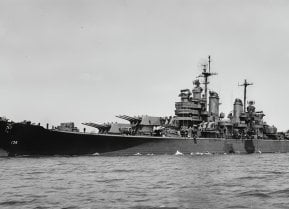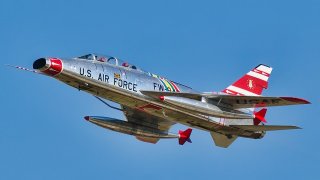F-100 Super Sabre Fighter: The Ultimate Guide
A total of 2,259 F-100s were built between 1953 and 1959. The active-duty USAF and the U.S. Air National Guard (ANG) retired the aircraft in 1971 and 1979 respectively but they remained in service with the Royal Danish Air Force and Turkish Air Force as late as 1982.
"Don't give me a One-Double-Oh./The ******* is ready to blow./The AB is there, but you're saying a prayer,/Don't give me a One-Double-Oh." That is just one of the seemingly endless verses from the humorous U.S. Air Force ditty "Give Me Operations," popularized by folk singers from Oscar Brand to accomplished fighter pilot Lt. Col. (USAF, Ret.) Dick Jonas, and the particular verse quoted herein is referring to the F-100 Super Sabre. Now, mind you, the original Sabre jet, i.e. the F-86, was a pretty "super" fighter plane in her own right, though in retrospect her legendary kill ratio against the MiG-15 during the Korean War may have admittedly been highly exaggerated. Be that as it may, it in turn begs the question as to whether the so-called Super Sabre lived up to her own lofty moniker. Let's take a look.
Starting up the F-100 Super Sabre
The F-100 Super Sabre made her maiden flight on May 25, 1953 — just two months before the Korean Armistice Agreement that halted the conflict in which the original Sabre had proven her mettle — and entered into official operational service with the U.S. Air Force on September 27 of the following year.
The plane was built by North American Aviation (NAA), who, even before building the F-86, had already made history in WWII via the B-25 Mitchell and the P-51D Mustang. As might be guessed from the moniker, the F-100 was intended to improve upon the basic F-86 Sabre design.
In the process, the NAA R&D team came up with a warbird that certainly made history in her own right, and in more ways than one. Affectionately nicknamed "The Hun" (mainly as a shortened form of "hundred," though there may have also been at least a subconscious channeling of Attila the Hun and/or Kaiser Bill's WWI Imperial German Army afoot), this warbird turned out to be the world's first operational supersonic fighter, boasting a max airspeed of Mach 1.16 (864 mph/ 1,437 kph).
Little surprise, then, that the Thunderbirds — the USAF's famed aerial demonstration unit — made the F-100 their airplane of choice from 1956 to 1968. Another significant peacetime achievement for the Super Sabre occurred on August 7, 1959, when two F-100Fs became the first-ever jet fighters to fly over the North Pole.
In addition to being faster than the original Sabre, the Super Sabre also featured an upgrade in armament, from the six .50 caliber machine guns of the former to the four M39 20mm cannon of the latter.
Striking with the Super Sabre
As impressive as those peacetime feats were, those still left unanswered as to how well the Super Sabre would live up to her namesake in actual combat. The Vietnam War would provide the answers to those questions.
On April 16, 1961, F-100s became the first USAF combat jets to enter the Vietnam War, deploying from Clark Air Base in the Philippines to Don Muang Royal Thai Air Force Base in Thailand. Just under four years later, on April 4, 1965, the Hun would engage in USAF's first air-to-air jet combat duel in the Vietnam War, in which an F-100D piloted by Capt. Donald W. Kilgus of the 416th Fighter Squadron was credited with a probable kill against a North Vietnamese MiG-17 "Fresco."
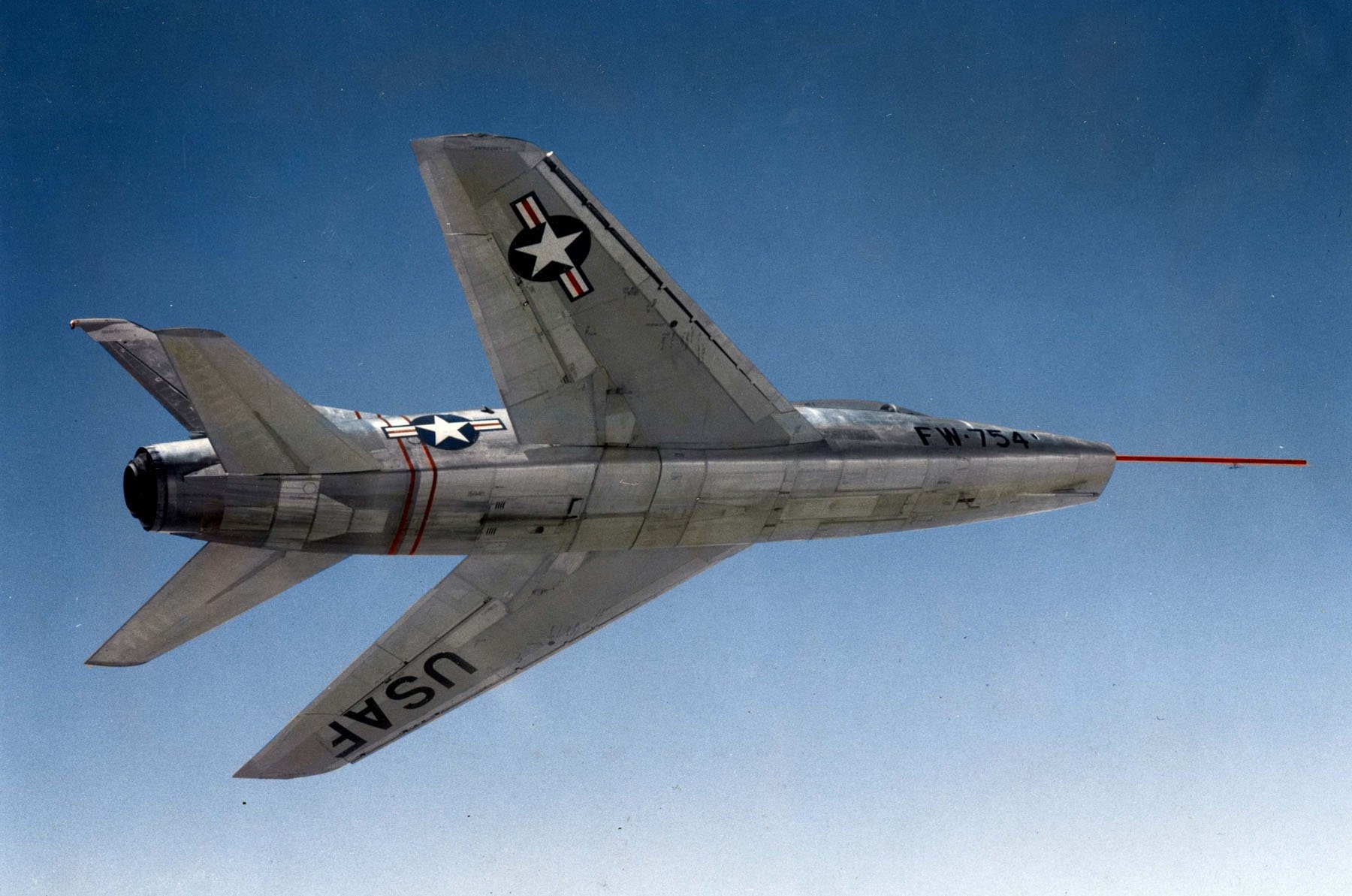
Alas, no Hun driver was ever officially credited with confirmed air-to-air kills, so in that regard, the Super Sabre did not attain the legendary aerial warrior status that her predecessor did. But if it's any consolation to the men who flew the warbird, no F-100s were ever lost to enemy fighters over Vietnam either. And the Hun definitely made more than her fair share of contributions to the Vietnam War effort in the air-to-ground role, flying a whopping 360,283 combat sorties in the deadly skies over Southeast Asia — more than all other USAF fighters combined — with 242 losses.
In the words of former Hun driver Dave Barnett, "Yes, the F-100 was a great fighter jet which I thoroughly enjoyed flying. It did not have many of the 'bells and whistles’ that current aircraft have, but it was very reliable and effective in delivering weapons 'on target.'"
Of particular significance — and thus achieving another military aviation milestone in the process — the F-100 became the first USAF fighter dedicated to Electronic Warfare (EW) and Suppression of Enemy Air Defenses (SEAD) in the “Wild Weasel” program, which used highly modified F-100F aircraft to seek and destroy enemy AAA and SAM sites.
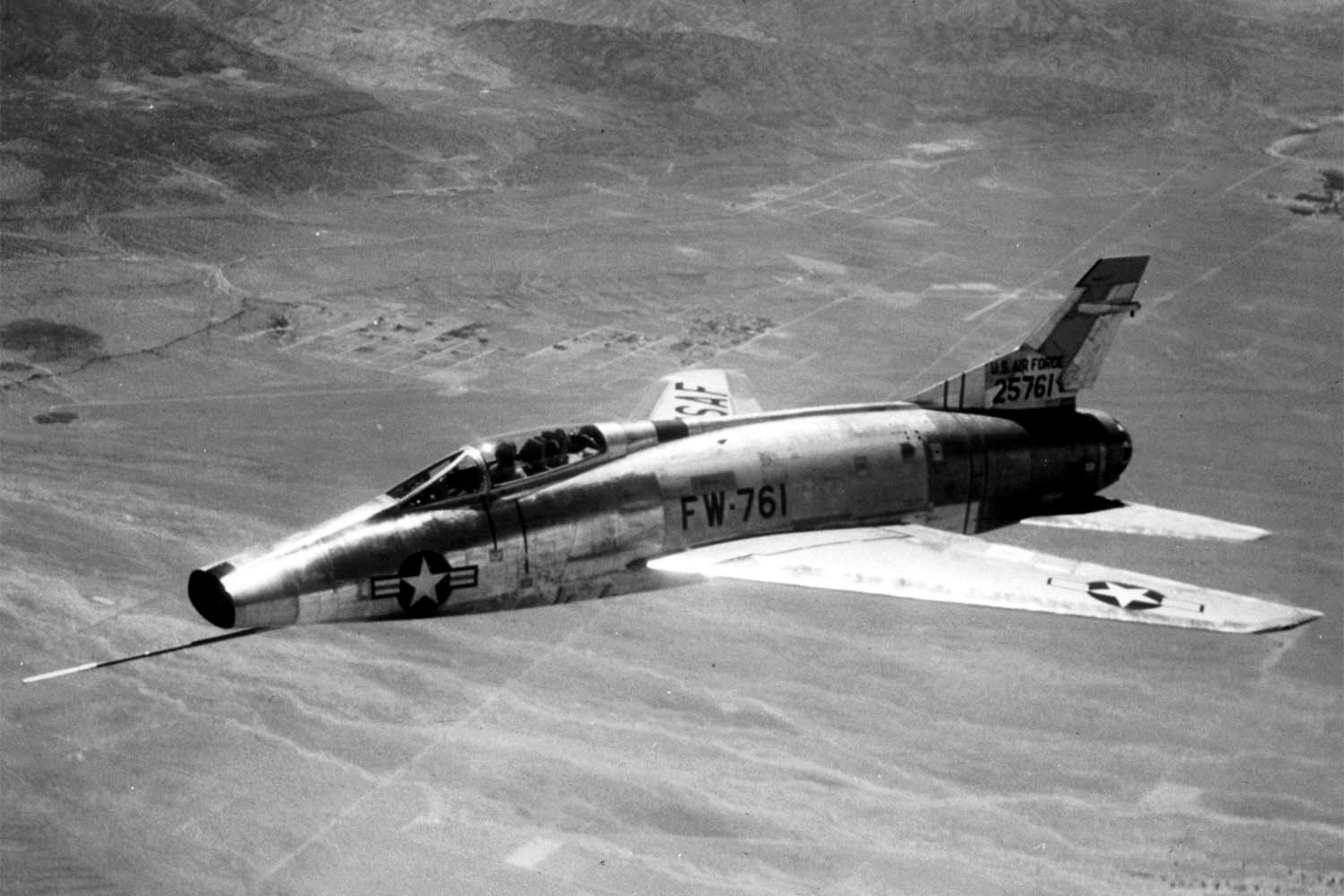
F-100: Where Are They Now?
A total of 2,259 F-100s were built between 1953 and 1959. The active-duty USAF and the U.S. Air National Guard (ANG) retired the aircraft in 1971 and 1979 respectively but they remained in service with the Royal Danish Air Force and Turkish Air Force as late as 1982. Over thirty of the warbirds survive today, with four of them being airworthy, including "Misty 1" — painted in honor of Col. Bud Day, the only person ever to be awarded both the Medal of Honor and the Air Force Cross — owned by the Collings Foundation as part of their Vietnam Memorial Flight Collection and Programs at Ellington Field, Houston, Texas.
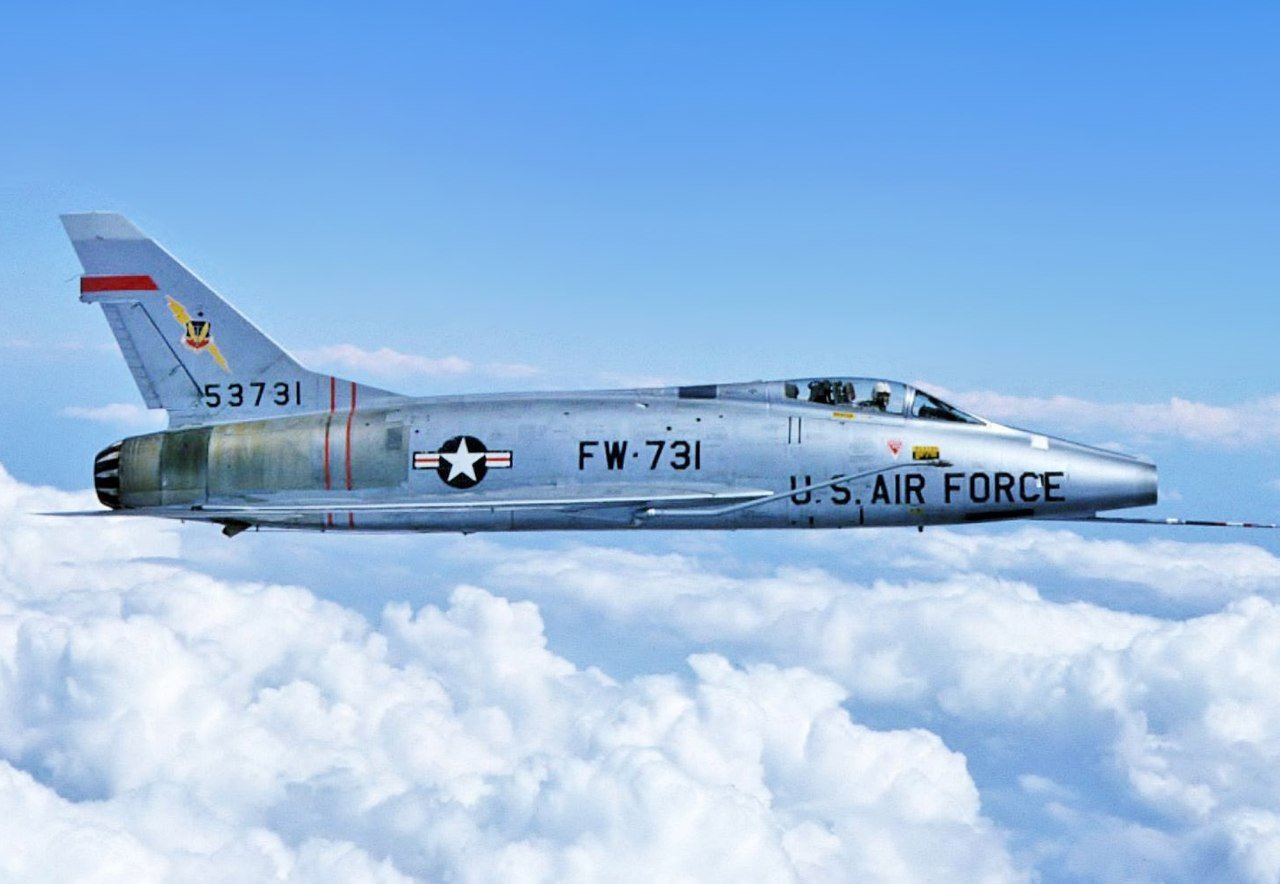
About the Author
Christian D. Orr is a former Air Force officer, Federal law enforcement officer, and private military contractor (with assignments worked in Iraq, the United Arab Emirates, Kosovo, Japan, Germany, and the Pentagon). Chris holds a B.A. in International Relations from the University of Southern California (USC) and an M.A. in Intelligence Studies (concentration in Terrorism Studies) from American Military University (AMU). He has also been published in The Daily Torch and The Journal of Intelligence and Cyber Security. Last but not least, he is a Companion of the Order of the Naval Order of the United States (NOUS).
